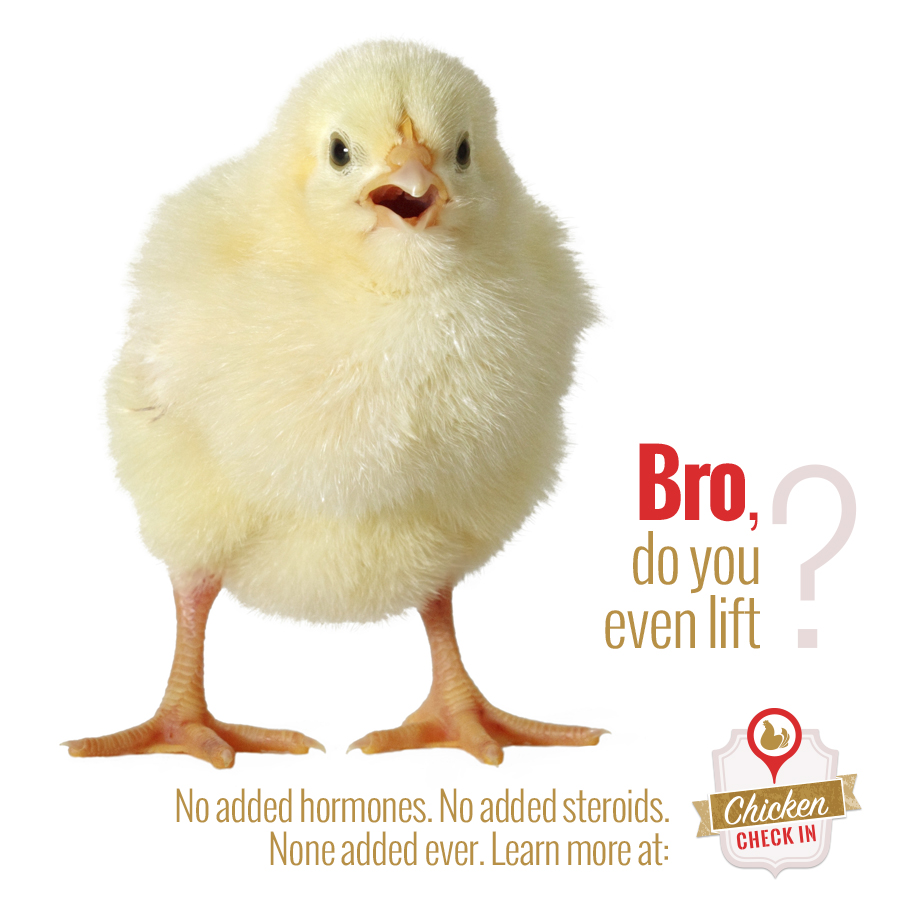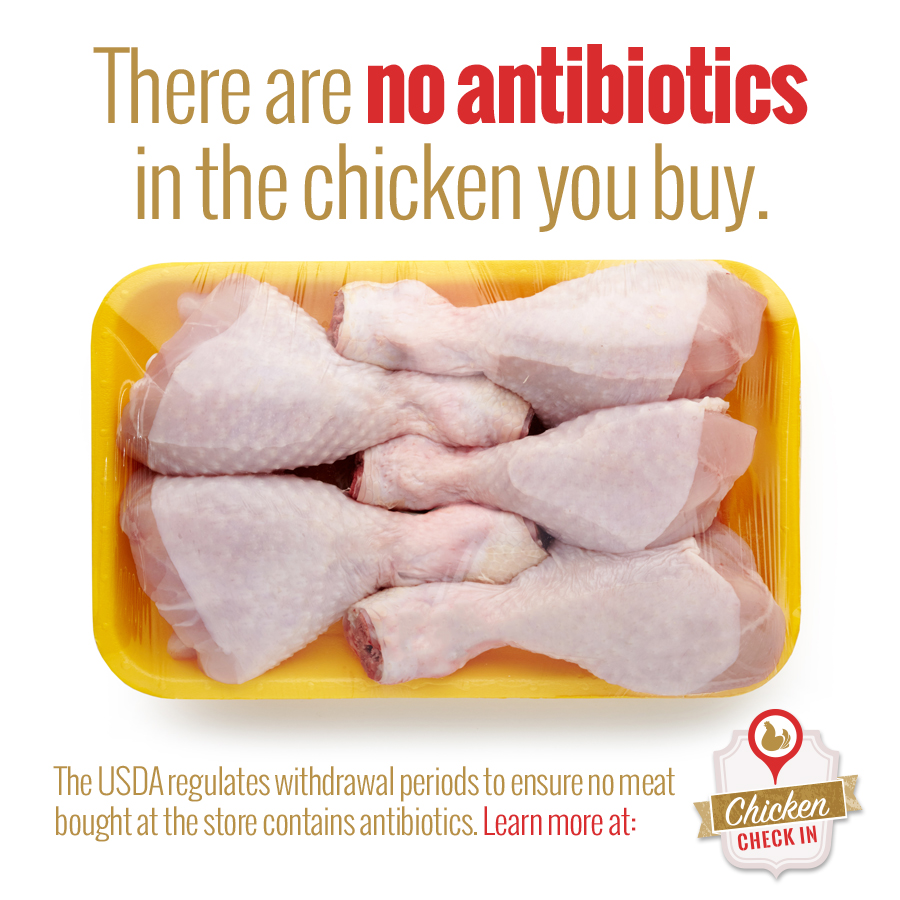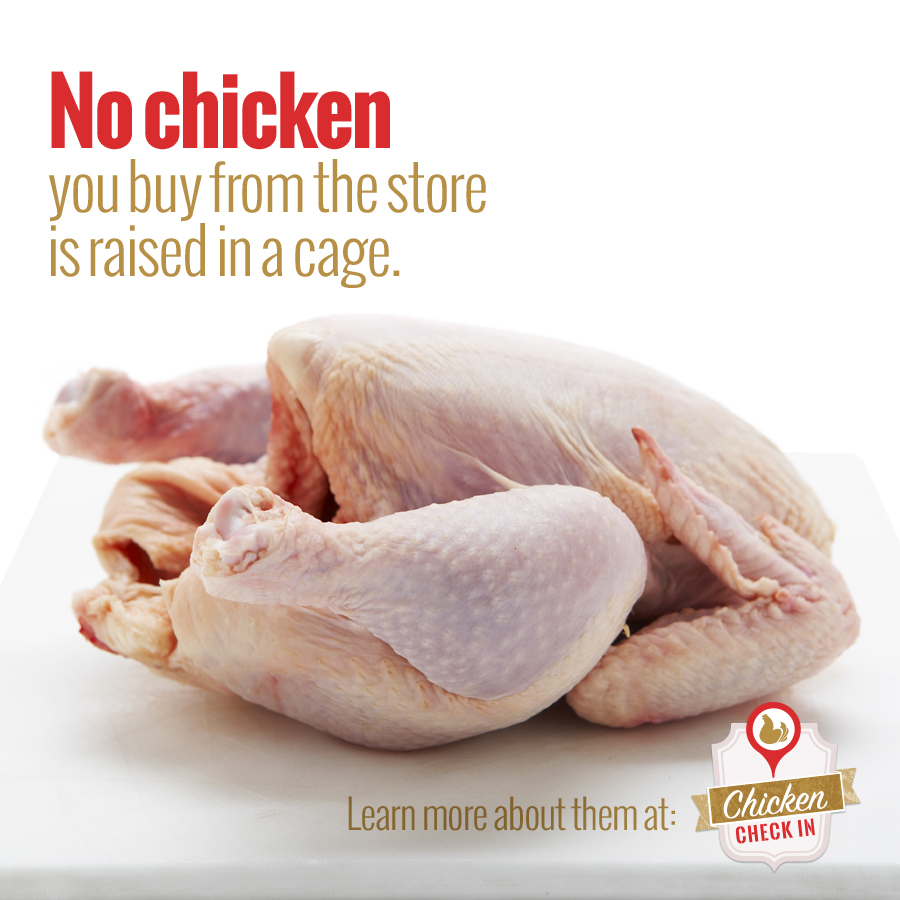The Top 4 Chicken Myths – Busted!
When it comes to how broiler chickens (chickens raised for meat) are raised, there are quite a few myths and misconceptions. It’s easy to understand why – most people are at least three generations removed from the farm. That means most people don’t have first-hand knowledge of what life on a farm is like – for either farmers or the animals they care for. To help clear up the confusion and get the facts straight, we narrowed down the top 4 myths about how broiler chickens are raised.
Myth #1: Chickens are given hormones and steroids to make them grow faster AND bigger.
Nearly 80% of Americans believe this myth.
The reality? No chicken sold or raised in the U.S. is given hormones or steroids. In fact, the USDA has banned all hormones and steroids in poultry since the 1950s.
Chickens are bigger and grow faster these days because of good breeding, proper nutrition, care by a veterinarian and better living conditions. These all contribute to the healthier growth of birds.
If hormones and steroids aren’t permitted, then why is there a label? Labels that read: “raised without hormones or steroids” or “no hormones added” must also include a statement saying that no hormones and steroids are used in the production of any poultry raised in the United States. So if you’re deciding between a package of chicken that says “no hormones added” and one that doesn’t, you can rest assured that neither of them do.
If you’re curious about what other labels you might find on packages of chicken mean, check out this infographic on common chicken labeling terms.
Myth #2: Chickens are genetically modified.
The reality? There are no GMO chickens commercially available.
In fact, there are no genetically modified animals commercially available currently. In late 2015, genetically engineered salmon was the first GMO animal to be approved, but it will not be on the market and available for purchase for a few years.
If chickens aren’t genetically modified, then how do they get so big? The answer is surprisingly simple – traditional breeding. The most critical part of this breeding process is identifying which chickens are the strongest and healthiest – and then they are bred together. Today’s breeding farms are equipped with the right technologies to create continuous small improvements in each generation. The result of decades of breeding and thousands of generations of birds is the larger and healthier birds that you see today.
So, yes, today’s chickens are bigger and grow faster than their ancestors. However, through this highly technical and closely monitored traditional breeding process, we also ensure today’s birds are stronger and healthier than ever before.
Myth #3: If a chicken is given antibiotics, then the chicken meat will have antibiotic residue in it.
Nearly 3/4 of Americans believe antibiotics are present in most chicken meat.
The reality? All chicken you buy is technically “antibiotic free” – federal rules require that if any antibiotics are used on a farm they must have cleared the animals’ systems before they can leave the farm.
So why are chickens given antibiotics? Just like people, animals sometimes get sick, and treating illness is a responsible part of animal care. When this happens, farmers work with animal health experts and veterinarians to determine if an antibiotic is needed. The vast majority of the antibiotics that we use are never used in human medicine, and we’re taking steps to phase out those most critical to human medicine.
Antibiotics are just one of many tools farmers use to keep their flocks healthy, in order to contribute to a safe and wholesome food supply. Today, all chicken farms are under a health program designed by a licensed veterinarian.
Myth #4: Chickens raised for meat (broilers) are raised in cages.
The reality? No chicken meat you buy is raised in a cage. Ever.
The majority of chickens raised for meat in the U.S. live in large, open structures called houses, where they are free to roam, munch on food, drink water and socialize with other birds.
Get an inside look at a chicken house and check out this video.
Have more questions about how chicken is raised and produced? You can check out our FAQ to get answers to the most frequently asked questions about chicken. You can also watch our Day in the Life video series to see how chickens are raised from their first day on the farm to when they are transported off to processing.



